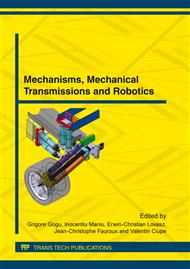p.463
p.471
p.477
p.487
p.497
p.505
p.515
p.523
p.531
Fabric Defect Detection Using Wavelet-Enhanced Single-Point Photoelectric Sensing System
Abstract:
A fabric defect detection system based on single-point photoelectric sensing, was proposed and developed. The performance of the system was enhanced by using wavelet denoising algorithm to reduce the negative effect of noise and the environment disturb, such as fluorescent light in the factory. Instead of detection of light reflection from fabric, a light transmission technique with higher signal-to-noise rate was employed in the system for evaluating the fabric defect. A Si photodiode was used to record the defect signal of fabric. The signal was enhanced by stationary wavelet transform. The signal was quantitatively evaluated and finally a defect alarm was triggered. From the experimental results, the timeliness, robustness and detection precision of the system were demonstrated, therefore, it could be recommended for the applications in fabric industries.
Info:
Periodical:
Pages:
497-504
Citation:
Online since:
March 2012
Authors:
Price:
Сopyright:
© 2012 Trans Tech Publications Ltd. All Rights Reserved
Share:
Citation:


